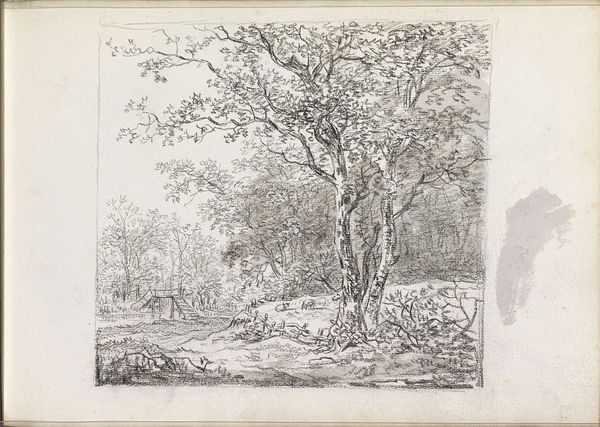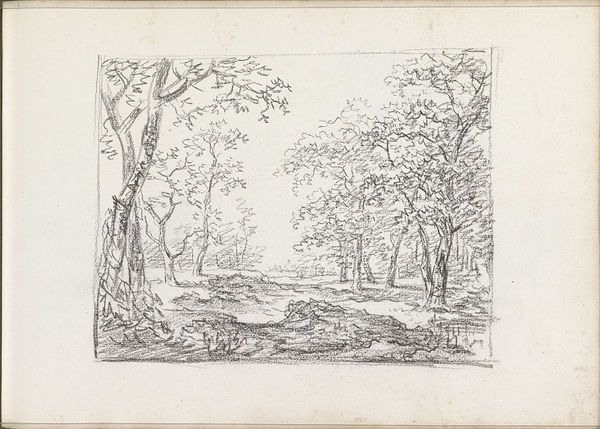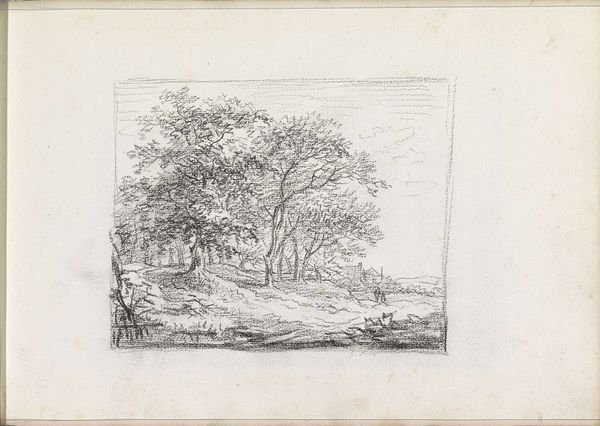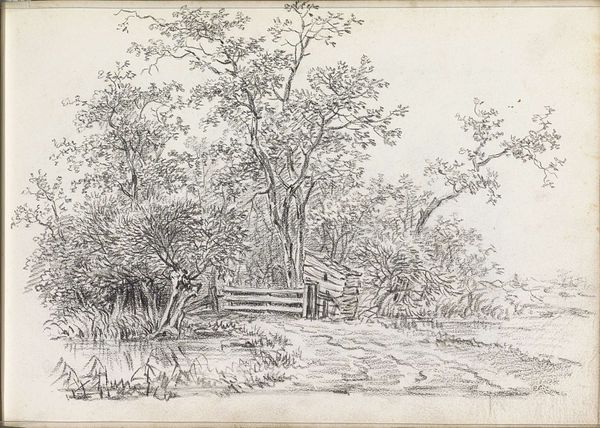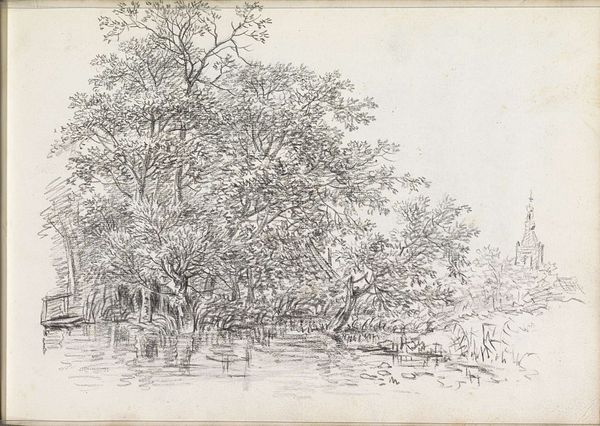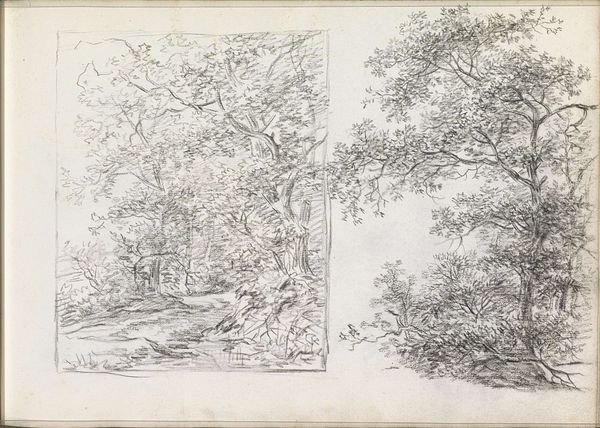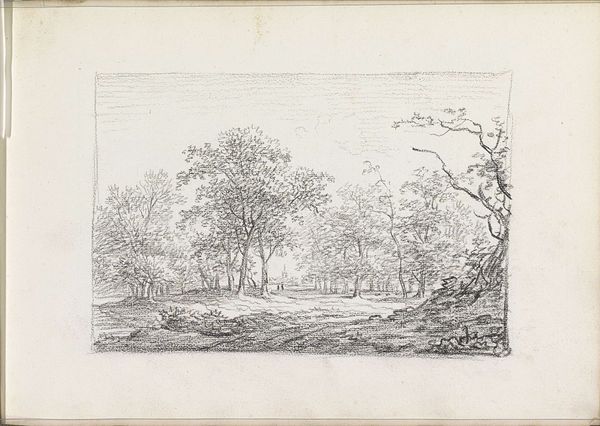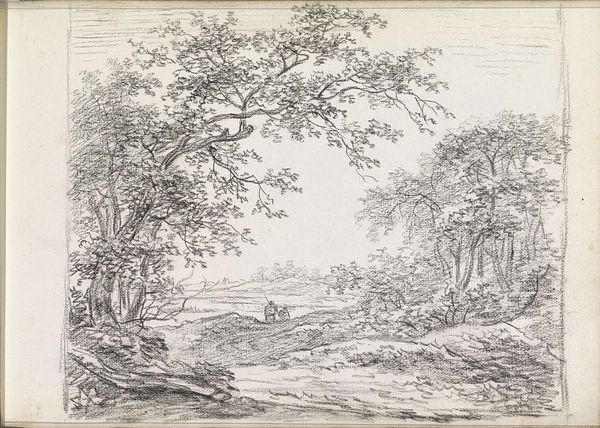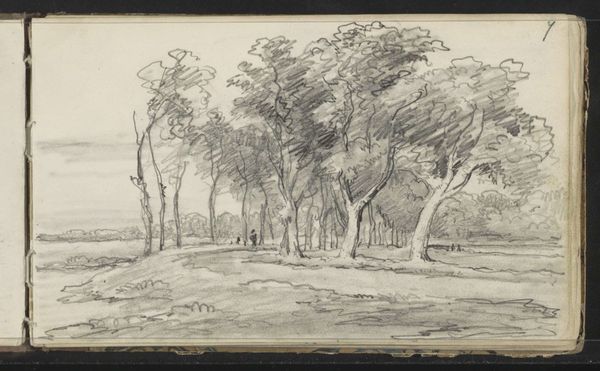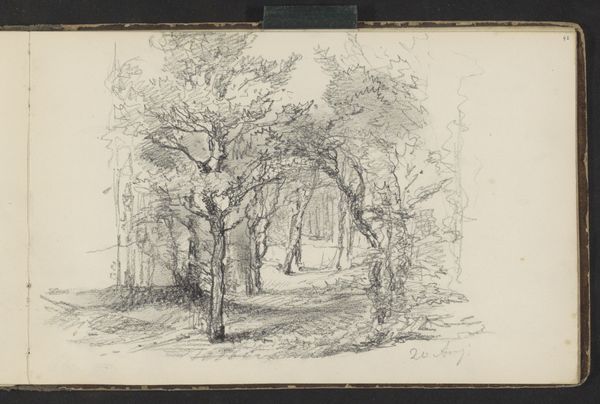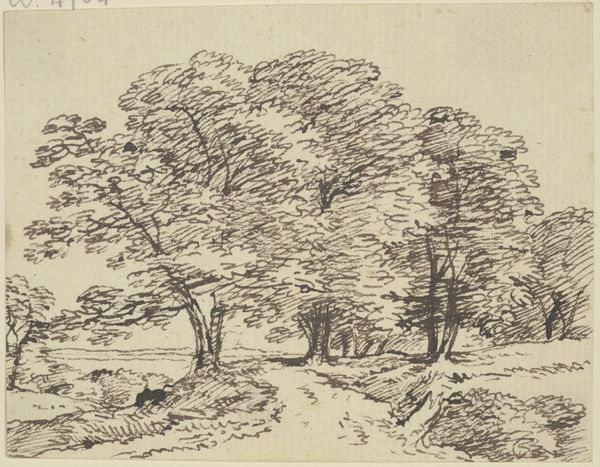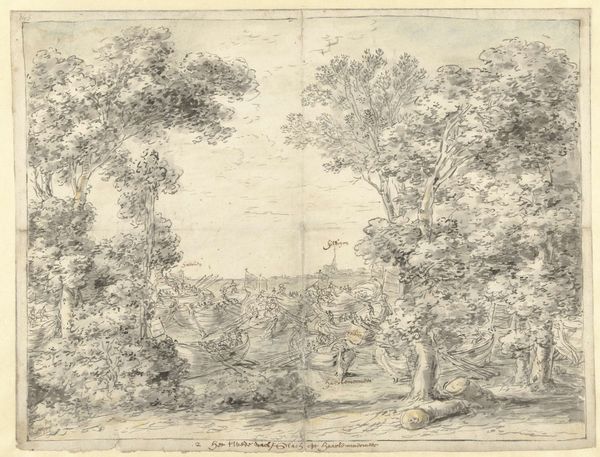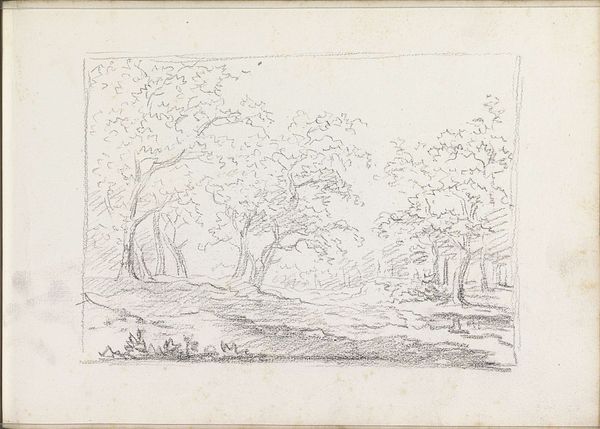
drawing, pencil
#
drawing
#
pencil sketch
#
landscape
#
pencil
#
pencil work
#
realism
Copyright: Rijks Museum: Open Domain
Curator: This is a pencil drawing by Andreas Schelfhout, titled "Ezel en figuren op een pad langs een waterkant," created around 1811. It is currently held here at the Rijksmuseum. Editor: It feels immediately calming. The gray scale lends a sense of serenity, and the detailed rendering of the foliage almost invites you into that waterside path. Curator: Indeed. Schelfhout masterfully uses the pencil to define depth and texture. Notice how the varying pressure creates a nuanced range of tones, establishing a hierarchy where certain elements become focal points? Editor: And it makes you consider the practical aspect, too, doesn't it? The simplicity of a pencil allowing the artist to record and develop his observations on site. How reliant was he on the locally sourced graphite for quality, the sharpness of his tools? These details of labor are implicit. Curator: While such considerations are worthwhile, I'm drawn more to the formal composition. Observe how the diagonal of the path guides the viewer's eye, leading us deeper into the spatial recession suggested by the placement of tonal value shifts. Editor: I agree the spatial elements are crucial. I'd argue it reveals much about landscape as experienced in that era—the blend of function and nature, figures in tandem with beasts of burden. And, of course, there is the water, perhaps signifying resource and livelihood. Curator: You bring an important layer. Still, I perceive a strategic calculation in his marks, especially in contrast with that large central tree whose layered foliage creates a pleasing complexity and an anchor for our perception. It's the linchpin of this tranquil tableau. Editor: Well, for me, it all connects to the human element – our dependence on the natural world, but also our potential impact upon it, reflected in something as simple as a humble pencil sketch and where and how Schelfhout worked within that material reality. Curator: A pertinent point that enriches our reading. His attention to form reveals also the deeper understanding he sought. Editor: An early, environmentally conscious depiction embedded within seemingly straightforward marks of the pencil.
Comments
No comments
Be the first to comment and join the conversation on the ultimate creative platform.
